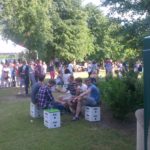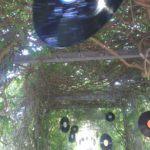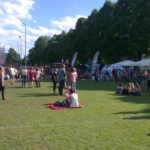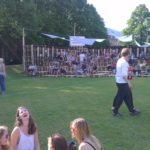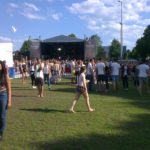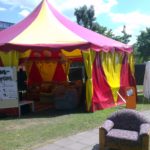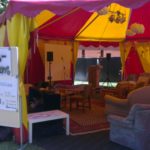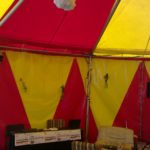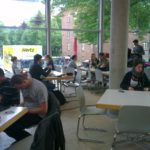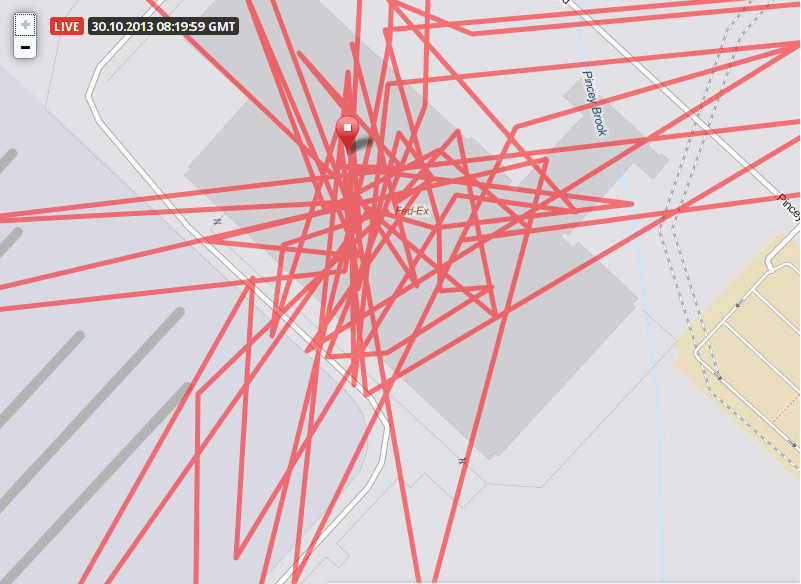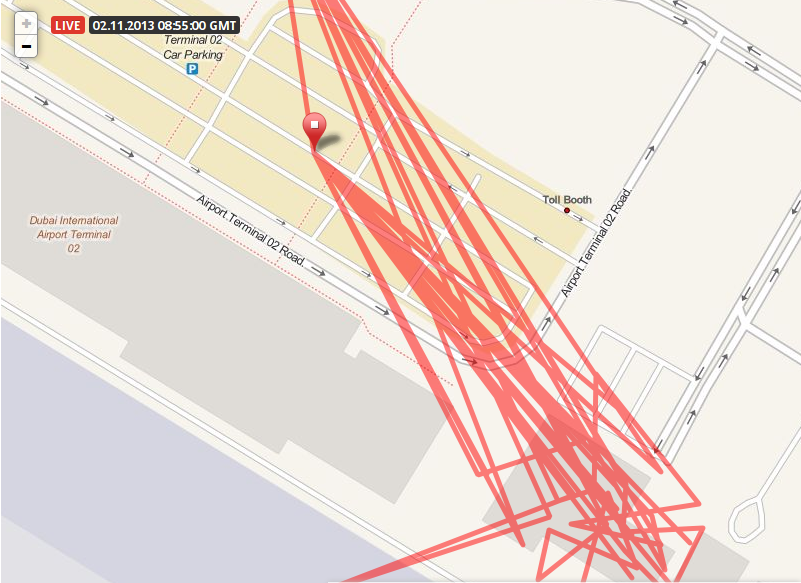In this final reSync session in the UK we focussed on Futures. It was a very cold day with the wind blowing around the roof perhaps put some people off however It was great to welcome Paolo Cardullo and Atau Tanaka.
 Paulo is a photographer and cultural studies tutor currently working on proposals for a Deptford walking/map project with British Library Archives fund so we were able to confer on techniques for street signage with qrcodes and NFC to promote linking and syncing of pictures and maps available.
Paulo is a photographer and cultural studies tutor currently working on proposals for a Deptford walking/map project with British Library Archives fund so we were able to confer on techniques for street signage with qrcodes and NFC to promote linking and syncing of pictures and maps available.
Atau is currently Professor of Media Computing at Goldsmiths leading a 5 year research project at the Embodied Audiovisual Interaction group. There are some great opportunities for the use of NFC and QRcodes in music yet to be explored as well as a wealth of new media systems now available to aid experimentation eg eMotive . In 2008 Cardiacs frontman and creative powerhouse Tim Smith suffered a catastrophic stroke which left him with impaired voice and motor function. Atau confirmed his department had research and practice commitments for just this sort of disabled support in terms of music making but which may lead to some well needed support in 2014 for Tim.
 Gargi Sen from magic lantern movies arrived later in the afternoon to discuss new approaches to the distribution and presentation of documentary film archives which deserve greater development and reward. They are in the process of applying for the NESTA R&D fund for the Arts to develop a documentary film distribution platform for cinema audiences. They are seeking a technical partner in the UK in support of the application they are making now which we can contribute to and perhaps collaborate on next year.
Gargi Sen from magic lantern movies arrived later in the afternoon to discuss new approaches to the distribution and presentation of documentary film archives which deserve greater development and reward. They are in the process of applying for the NESTA R&D fund for the Arts to develop a documentary film distribution platform for cinema audiences. They are seeking a technical partner in the UK in support of the application they are making now which we can contribute to and perhaps collaborate on next year.
 Adnan Hadzi wasn’t available to contribute today as he is travelling with Bitnik to attempt a parcel delivery to Nabeel Rajab in Bahrain
Adnan Hadzi wasn’t available to contribute today as he is travelling with Bitnik to attempt a parcel delivery to Nabeel Rajab in Bahrain



 Irational will also organise a workshop in Lueneburg, the week before we run the Deckspace.TV workshop, on “
Irational will also organise a workshop in Lueneburg, the week before we run the Deckspace.TV workshop, on “ Javier arrived bang on time for the start of the session at 11am so we had plenty of opportunity to discuss current work and indulge in a little nostalgia for 1999-2003 during the early days of
Javier arrived bang on time for the start of the session at 11am so we had plenty of opportunity to discuss current work and indulge in a little nostalgia for 1999-2003 during the early days of 
 Giovanni d’Angelo was one of the key backspacers and also joined us again for further excavations as we distilled the stored materials into specially cleared shelves in preparation for closer examination and processing. Before long tables already loaded with lunch debris are joined by contents of the cd racks and VHS silos. The
Giovanni d’Angelo was one of the key backspacers and also joined us again for further excavations as we distilled the stored materials into specially cleared shelves in preparation for closer examination and processing. Before long tables already loaded with lunch debris are joined by contents of the cd racks and VHS silos. The 
